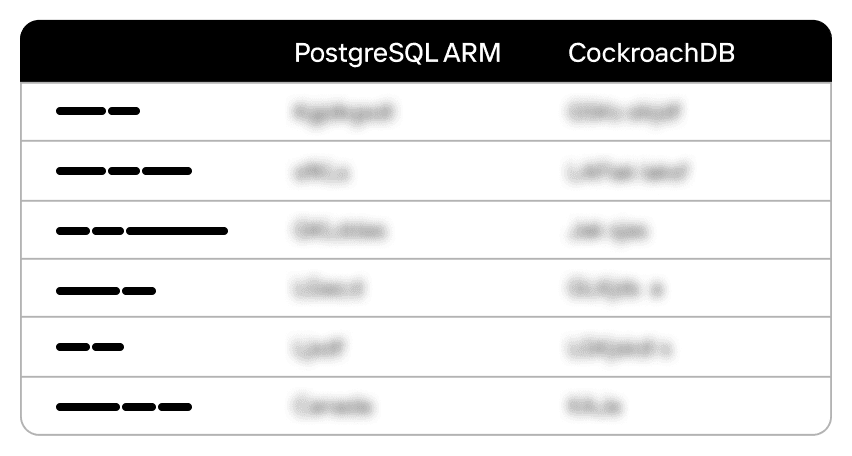Business Challenge:
In the fall, a company assigned us a task of conducting load testing. It turned out that the customer was implementing an educational project based on the platform as a service (PaaS) principle and was creating a platform that would ensure effective interactions between teachers and students in the educational process.
The Customer Had the Following Choices:
The customer chose the first option. They then purchased a solution for the pilot program from an American educational platform developer and enhanced the basic product to meet the established requirements.
The Main Task:
In load testing, there are different types of tests. For example:
The main task of load testing, in this case, was to confirm that the system met the stated requirements for maximum performance, which was defined as supporting as many as 500,000 simultaneous users.
To begin with, we suggested running a performance test consisting of one iteration of load testing to determine the maximum performance.
In order to run the test to find maximum performance, a number of preparatory tasks needed to be performed:
Architecture Description and Testing Stand Preparation
Preparation of the load testing stand is an integral and very important stage of testing. The ideal stand configuration is an identical copy of an industrial stand, but this is not always possible when testing large-scale systems. In this case, it was critical to choose an optimal configuration to minimize the utilized capacity and obtain data that could be reliably extrapolated to the industrial system.
Testing Profile
However, the fact that the system was not in industrial operation was also a significant minus. It was impossible to collect user statistics about the system business processes. As a rule, in such situations, when a load profile is expertly compiled, the business customer and industry experts are involved. That said, we had an opportunity to access information from open sources and we used official data from Ministry of Education and Science.
Thus, after collecting and analyzing all of the available data, we had a load profile ready, the requirements for filling the database were defined and the load testing stand was prepared. We were ready to conduct load testing in the conditions which were as close to “battlefield operation” as possible.
Testing
From the very start of the project, we have been writing the methodology and preparing load testing facilities (LTF) in parallel. LTF are capacities that will generate load and to test them sufficiently, it was necessary to estimate the throughput of an individual load station. This stage was needed to calculate the number of load stations required to supply the target load.
The throughput of a load station is measured using synthetic testing, i.e. standardized tests showing the performance of an information technology (IT) system in terms of hardware and software performance metrics.
In the process of searching the throughput of load stations, the load testing team did not have access to testing stand machines, and we did not have an opportunity to observe the utilization of hardware resources of the stand itself. After the first synthetic test, it became clear that central processing unit (CPU) utilization at the load station did not exceed 20%. The first concern was the non-optimal performance of the load scripts. After a series of optimizations to the load scripts, we still observed no improvements.
The next possible reason for the throughput limitation was the network channel itself (in load scripts there was a large number of web statics). The load testing team transferred load stations to one network with a gigabit communication channel instead of 100 Mbps. After transferring to one network, a few more synthetic tests were performed which showed a similar result. The CPU load of the load station did not exceed 25% or 3% of the target load.
The reasons for the loading station side were excluded, and the team received access to testing stand machines in due time. Monitoring software to track hardware metrics was installed on the testing stand and the PFLB team continued synthetic testing.
During the test, it was revealed that, at 10% of the target load, the web server’s CPU utilization reached 100% and after the test was terminated that CPU utilization dropped to 2%. The customer was notified of this problem, and then the team needed to correct the test plan and load testing methodology as soon as possible.
Before the problems with the web server’s CPU utilization were identified, stages of 10% of the target intensity (from 10% to 110%) had been set in the methodology to find the maximum performance. In the current configuration, it was clear that starting with 10% intensity did not make sense. To solve this problem, we decided to introduce into the test plan “micro stages” of 0.5% of the load from the target load up to 10% (20 stages).
Results
Learn more:
Related insights in case studies
Benchmark Testing Case Study: How PFLB Validated Chainguard Docker Container Performance

Chainguard specializes in providing highly secure Docker container images — regularly updated, tightly managed, and designed to minimize vulnerabilities. While their reputation for security is well-established, Chainguard wanted to ensure their containers also delivered competitive performance. After all, strong security is crucial, but it shouldn’t slow you down. Client Goal Chainguard needed clear, objective proof […]
From Weeks to Hours: Accelerating Data Masking and Enabling Easy B2B Data Sharing for a Leading Bank

A leading bank, ranked among the top 20 in its market, provides services to millions of customers daily. Staying at the forefront of this competitive market requires not only stable and updated infrastructure but also rapid feature delivery to maintain the highest service quality. Challenge The bank faced a critical challenge in enabling safe sharing […]
Leading Oil & Gas Innovator, NOV Excels with Real-Time Drilling Data After Load Testing

NOV, a renowned global provider of equipment, components, and IT products for the oil and gas industry, which is located in Texas, USA, empowers extraction companies worldwide with innovative technological solutions that enable the safe and efficient production of abundant energy while minimizing environmental impact. Under its CTES brand, NOV offers a range of IT […]
From Hundreds to Thousands: Scaling MEFA Pathway Software for Mass Student Registration

FolderWave, Inc. is a leading digital services provider in the Massachusetts e-learning sector. It aids millions of students in researching and planning a job-oriented education. The company delivers IT solutions, platforms, and services in partnership with notable non-profit organizations like MEFA Pathway and College Board, which connect a vast network of colleges, schools, and universities […]
Be the first one to know
We’ll send you a monthly e-mail with all the useful insights that we will have found and analyzed
People love to read
Explore the most popular articles we’ve written so far